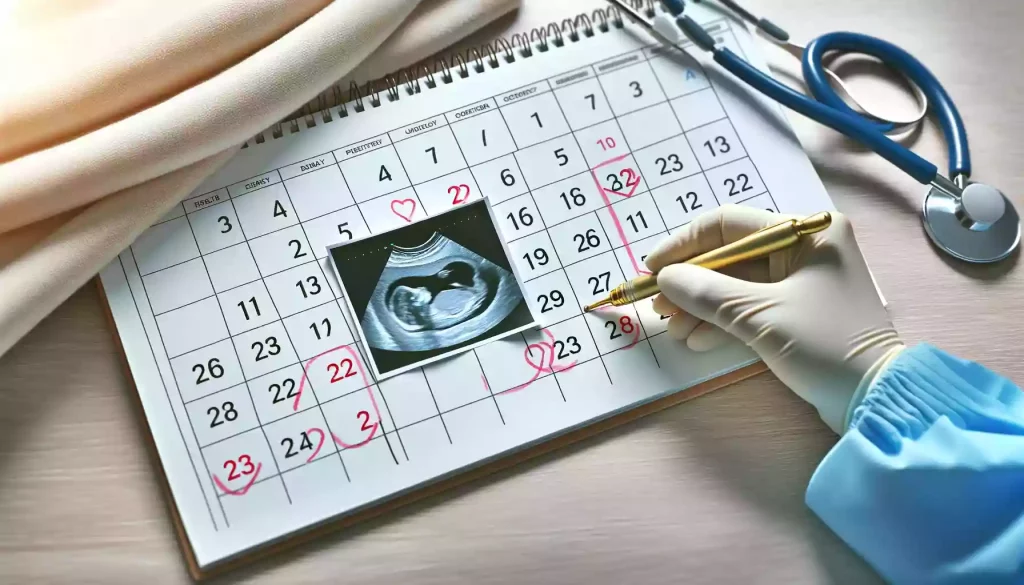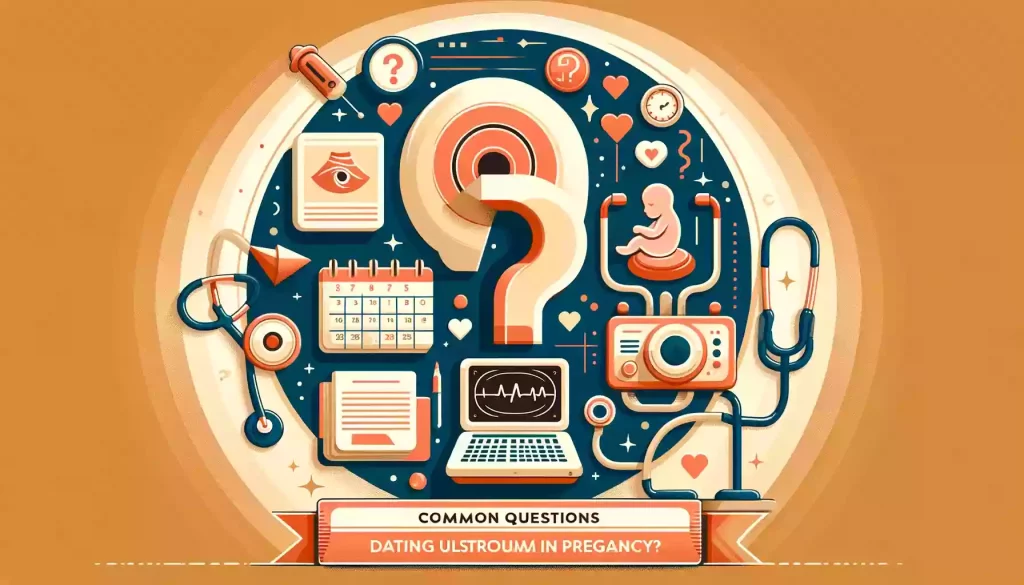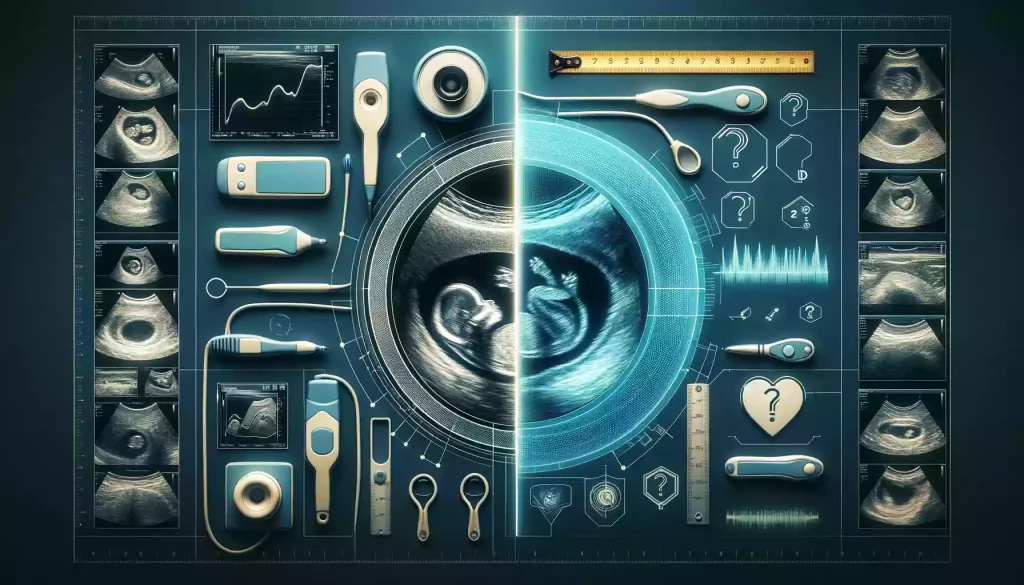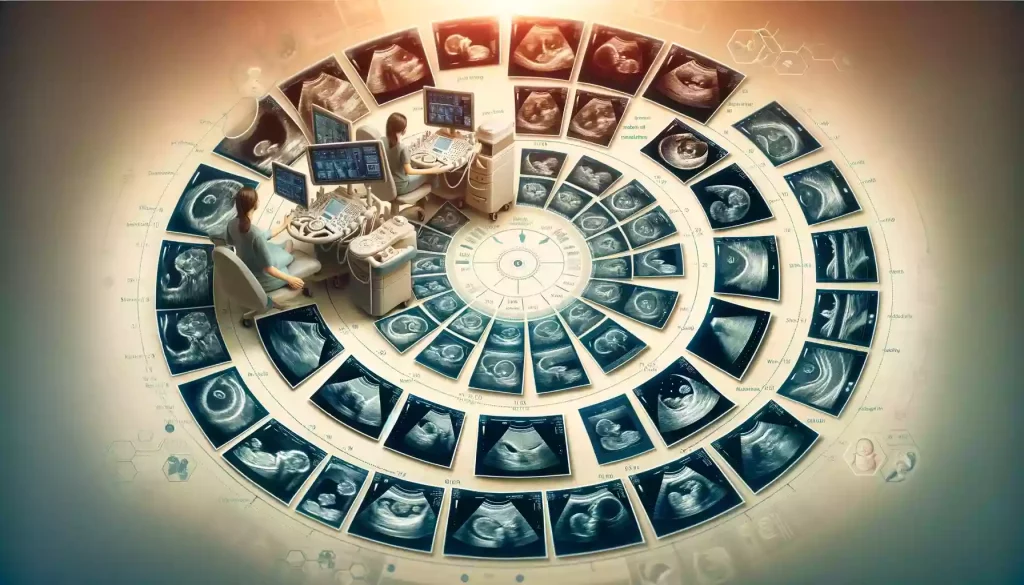Understanding Dating Ultrasound Pregnancy
When it comes to pregnancy, one of the first and most important steps is understanding the role of a dating ultrasound. This essential procedure, often simply referred to as a 'dating scan', is typically one of the first looks you will have at your developing baby. But it's more than just a peek at your little one; it's a critical tool for ensuring the health and safety of both mother and baby during pregnancy.
A dating ultrasound in pregnancy is used to measure the baby, helping to determine the gestational age and the due date. This is particularly crucial if you're unsure about the date of your last menstrual period or if you have irregular cycles. An accurate due date is vital for monitoring the baby's growth and planning for the birth.
Moreover, a dating ultrasound can also detect multiple pregnancies, assess the heartbeat of the fetus, and evaluate the health of the uterus and ovaries. Understanding the process, its importance, and what to expect can help ease any anxieties and prepare you for this exciting first glimpse of your baby.
Now, let's delve into some key takeaways about dating ultrasound in pregnancy:
Key Takeaways:
- A dating ultrasound is crucial for determining your baby's gestational age and expected due date.
- It's not just about seeing your baby; it also checks for the health of the pregnancy.
- Understanding this process can help alleviate anxiety and prepare you for your pregnancy journey.
The Importance of Accurate Dating in Pregnancy

The significance of accurate dating in pregnancy cannot be overstated. An accurate gestational age is fundamental for a healthy pregnancy journey. It informs not only the expected delivery date but also plays a crucial role in making key decisions throughout the prenatal period.
Accurate dating impacts various aspects of prenatal care. It determines the timing of important screenings and tests, ensuring they are conducted at the most beneficial times. For instance, certain genetic screenings are most accurate when performed during specific weeks of pregnancy. Similarly, the growth and development of the fetus are closely monitored based on the established due date, helping to identify any potential issues early on.
Beyond medical reasons, accurate dating also provides emotional benefits. Knowing the expected due date helps parents-to-be plan for the arrival of their child, both logistically and emotionally. It turns a journey filled with uncertainties into one where parents can feel more prepared and focused.
This process begins with the dating ultrasound, a cornerstone of modern prenatal care. Accurate dating in pregnancy sets the stage for a well-monitored and supported journey towards childbirth.
How Does a Dating Ultrasound Work?
Understanding how a dating ultrasound works is key to appreciating its role in your pregnancy. The procedure is non-invasive and is typically performed transabdominally, though in early stages, a transvaginal approach may be used for clearer images.
The ultrasound uses high-frequency sound waves to create images of your baby within the womb. As these sound waves bounce off your baby's body, they create echoes that are converted into visual images. This allows your healthcare provider to view your baby's shape, position, and movements.
Dating ultrasounds measure specific parts of your baby's body. The most common measurement is the crown-rump length (CRL), which is the length of the baby from the top of the head to the bottom of the spine. This measurement is extremely accurate in determining gestational age in the first trimester, usually within a week of accuracy.
Alongside CRL, the ultrasound can also assess the gestational sac, the amniotic fluid levels, and the fetus's heart rate. These additional measurements provide a comprehensive overview of your baby's health and development.
The procedure is typically quick, lasting about 20 to 30 minutes, and is generally considered safe with no radiation involved. It offers a unique opportunity for parents to see their baby for the first time, often providing a profound emotional connection to the pregnancy.
Understanding the process of a dating ultrasound helps demystify the first steps of prenatal care, providing reassurance and a sense of preparedness for expectant parents.
When is the Best Time for a Dating Ultrasound?

The timing of a dating ultrasound is pivotal in obtaining accurate information about your pregnancy. While it can be performed at various stages, there's an optimal timeframe that maximizes its effectiveness. The best time for this crucial scan is typically between the 7th and 12th weeks of pregnancy.
During this period, the ultrasound can provide the most accurate assessment of gestational age. This is because, in early pregnancy, embryos tend to grow at a similar rate. Thus, measurements taken during this window can precisely determine your due date. Waiting too long might lead to less accurate dating as individual growth variations start to appear.
Having the ultrasound at this stage also offers an early glimpse into the health of the pregnancy. It can confirm the heartbeat, check for multiples, and assess the early development of your baby. It's a reassuring step that not only provides medical insights but also an emotional connection with your developing baby.
Ultimately, the timing of your ultrasound should be a discussion between you and your healthcare provider, considering your unique health history and pregnancy circumstances.
Interpreting Your Ultrasound Results
Once your dating ultrasound is complete, interpreting the results is the next crucial step. The results can offer a wealth of information about your pregnancy, but understanding them can sometimes be overwhelming.
Your healthcare provider will explain the key findings, such as the baby's crown-rump length (CRL), which helps determine the gestational age. They'll also look at the gestational sac, amniotic fluid levels, and the baby's heartbeat. A normal heartbeat at this stage is usually between 110 and 160 beats per minute.
In addition to confirming your due date, the ultrasound can also reveal important information about the health of your pregnancy. This includes checking the position of the embryo, the condition of the uterus and ovaries, and the presence of any potential concerns.
It's essential to discuss any questions or concerns you have with your healthcare provider. They can provide clarity and guidance on what the results mean for your pregnancy journey, ensuring you have the information and support needed during this exciting time.
Common Questions About Dating Ultrasound

When it comes to dating ultrasounds, expectant parents often have a variety of questions. These inquiries are vital in understanding and preparing for this important aspect of prenatal care.
Is the dating ultrasound safe? This is one of the most common questions. The answer is yes; dating ultrasounds are considered safe for both mother and baby. They use sound waves, not radiation, and have been a routine part of prenatal care for decades.
How accurate are dating ultrasounds? In general, ultrasounds in the first trimester are the most accurate for dating a pregnancy. The margin of error is usually about a week, making them an invaluable tool for establishing an accurate due date.
Do I need a full bladder for the ultrasound? For an abdominal ultrasound in early pregnancy, a full bladder can help improve the visibility of the uterus and developing baby. Your healthcare provider will give you specific instructions based on the type of ultrasound being performed.
Can the ultrasound determine the sex of my baby? While it's possible to determine the baby's sex during an ultrasound, it's usually not the focus of a dating ultrasound. This detail is typically observed in later ultrasounds, around the mid-pregnancy mark.
Preparing for Your Ultrasound Appointment
Preparing for your dating ultrasound appointment is straightforward, but there are a few things to keep in mind to ensure the process goes smoothly. These preparations can help you feel more comfortable and may enhance the quality of the images obtained during the scan.
Dress Comfortably: You'll likely need to have your lower abdomen exposed during the ultrasound, so wearing loose, comfortable clothing can make the process easier. Some clinics provide gowns or coverings, but it's always good to dress in a way that makes access simple.
Bladder Preparation: Depending on how far along you are in your pregnancy, you may be asked to come with a full bladder. This helps push the uterus into a better position for imaging. Drink plenty of water before your appointment, but also follow any specific instructions given by your healthcare provider.
Understand the Procedure: Familiarizing yourself with what happens during an ultrasound can help reduce any anxiety. Remember, the procedure is typically quick, painless, and a wonderful opportunity to see your baby for the first time.
Accuracy and Limitations of Dating Ultrasounds

Understanding the accuracy and limitations of dating ultrasounds is crucial for setting realistic expectations. Generally, these scans are quite accurate when performed during the optimal timeframe, typically between 7 and 12 weeks of pregnancy.
The accuracy of dating ultrasounds decreases as pregnancy progresses. In the first trimester, the margin of error is usually within a week. However, in the second trimester, this increases to about two weeks, and in the third trimester, the margin of error can be even greater. This is due to individual variations in fetal growth rates as the pregnancy advances.
It's also important to note that certain factors can affect the clarity and accuracy of an ultrasound. These include the mother's body type, the position of the baby, and the quality of the ultrasound equipment. Experienced technicians and advanced equipment can mitigate these issues to some extent, but they are still factors to consider.
While ultrasounds are an invaluable tool in prenatal care, it's important to understand their limitations. They are not infallible, but when used correctly, they provide essential information for a healthy pregnancy.
Dating Ultrasound vs. Traditional Pregnancy Dating Methods
Dating ultrasounds represent a significant advancement in prenatal care, offering a more accurate and detailed view of pregnancy compared to traditional methods. Traditional pregnancy dating methods are primarily based on menstrual history and physical examinations.
Before the widespread use of ultrasounds, the first day of the last menstrual period (LMP) was used to calculate the due date. This method assumes a regular 28-day cycle and ovulation occurring on the 14th day. However, this is not accurate for all women, as cycle lengths and ovulation can vary greatly.
Physical examinations, another traditional method, involve measuring the size of the uterus during a pelvic exam. While this can give a general idea of gestational age, it's far less accurate than an ultrasound, especially as the pregnancy progresses and individual differences in fetal growth become more pronounced.
On the other hand, dating ultrasounds provide a direct look at the developing fetus. By measuring the fetus, rather than relying on assumptions about menstrual cycles or the more variable physical exam findings, they offer a more accurate estimation of gestational age.
This accuracy is crucial for several reasons. It helps in planning necessary medical interventions, ensures timely prenatal testing, and provides peace of mind for expectant parents. It also plays a vital role in cases where the LMP is unknown or the menstrual cycle is irregular.
However, it's essential to combine ultrasound findings with a comprehensive understanding of the mother's menstrual history and physical examination results for the most accurate dating.
While traditional methods still hold value, especially when ultrasounds are not available, the advent of dating ultrasound has brought a new level of precision and understanding to prenatal care.
The Role of Ultrasound in Monitoring Pregnancy Health

Ultrasounds play a vital role beyond just determining the due date; they are a key tool in monitoring the overall health of both the mother and the fetus throughout pregnancy. By providing a window into the womb, ultrasounds offer invaluable insights into fetal development and maternal health.
During various stages of pregnancy, ultrasounds can detect abnormalities in fetal development, assess the placenta's position and health, and monitor the amniotic fluid levels. These factors are crucial for identifying potential issues early, allowing for timely intervention if needed.
Ultrasounds also play a role in monitoring the growth of the fetus. Regular growth scans help ensure the baby is developing at a healthy rate, identifying either slow or excessive growth, both of which can be indicators of potential health concerns.
Additionally, in the case of high-risk pregnancies, ultrasounds become even more critical. They are used more frequently to closely monitor the progress of the pregnancy and to make informed decisions about care and delivery.
What to Expect After Your Ultrasound
After your dating ultrasound, there are several things you can expect. First and foremost, you'll have a clearer picture of your pregnancy's progress and your estimated due date, which is essential for planning ahead.
Your healthcare provider will discuss the results with you, explaining the various measurements taken and what they mean for your pregnancy. This is a good time to ask questions and express any concerns you may have.
If the ultrasound results are normal, you'll continue with your regular prenatal care schedule. However, if any abnormalities or concerns are detected, your healthcare provider may recommend additional testing or monitoring. This could include follow-up ultrasounds or consultations with a specialist.
Finally, it's normal to experience a range of emotions after an ultrasound. Whether it's excitement, relief, or even anxiety about the future, remember that it's all a normal part of the pregnancy journey. Always reach out to your healthcare provider or support system if you need reassurance or guidance.
FAQ: Everything You Need to Know About Dating Ultrasounds

When it comes to dating ultrasounds, there are many questions expectant parents often have. This FAQ aims to address the most common inquiries, providing clear and comprehensive answers.
Q: What is the primary purpose of a dating ultrasound?
A: The primary purpose of a dating ultrasound is to determine the gestational age of the fetus, which helps in calculating the due date. It's also used to check the baby's heartbeat, the number of babies, and the health of the uterus and ovaries.
Q: Can a dating ultrasound detect abnormalities?
A: While the main focus of a dating ultrasound is to estimate the age of the fetus, it can sometimes detect abnormalities or issues with the pregnancy. However, more detailed scans later in pregnancy are usually required for a comprehensive assessment.
Q: How should I prepare for a dating ultrasound?
A: Preparing for a dating ultrasound typically involves having a full bladder for better imaging, wearing comfortable clothing, and understanding that the process is safe and non-invasive. Always follow specific instructions from your healthcare provider.
Q: Is it necessary to have a dating ultrasound if I know my last menstrual period (LMP)?
A: Even if you know your LMP, a dating ultrasound can be beneficial. It provides more accurate dating, especially if you have irregular cycles, and it also offers an early look at the baby's development and health.
Q: Are there any risks associated with a dating ultrasound?
A: Dating ultrasounds are considered very safe. They use sound waves, not radiation, and there are no known risks to the mother or baby.
Q: What happens if my ultrasound results are different from my LMP-based due date?
A: If there's a significant difference, your healthcare provider may adjust your due date based on the ultrasound findings, as it's generally more accurate. This can help ensure that your pregnancy is monitored correctly and that future tests and procedures are timed appropriately.
Recommended Resources
- Expecting Better: Why the Conventional Pregnancy Wisdom Is Wrong--and What You Really Need to Know, Emily Oster, Penguin Books, 2014
- What to Expect When You're Expecting, Heidi Murkoff and Sharon Mazel, Workman Publishing Company, 2016
- The Pregnancy Encyclopedia, DK, 2016






Recommended Comments
There are no comments to display.
Create an account or sign in to comment
You need to be a member in order to leave a comment
Create an account
Sign up for a new account in our community. It's easy!
Register a new accountSign in
Already have an account? Sign in here.
Sign In Now